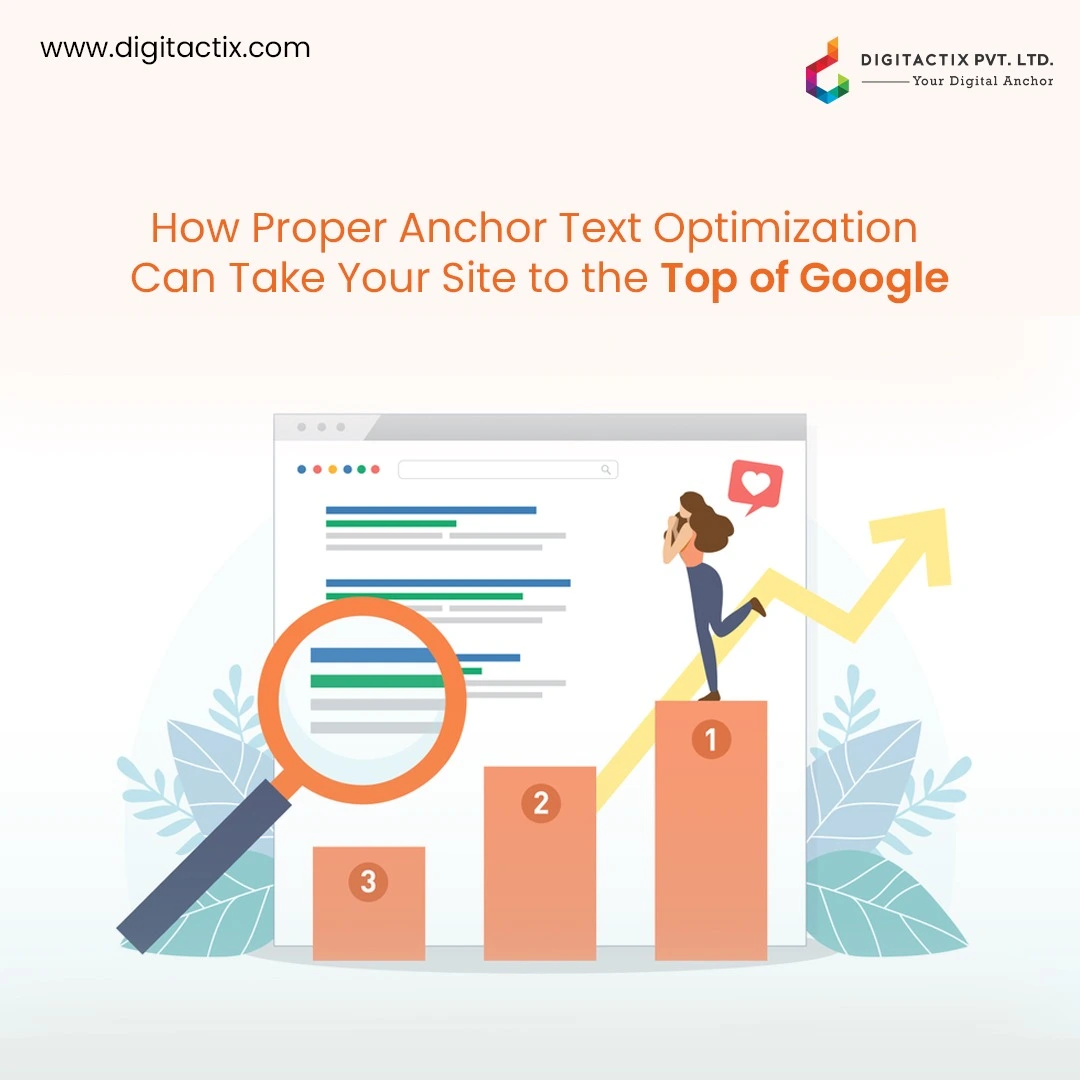Most people think of backlinks as the backbone of SEO and they’re right, but what often gets lost in that conversation is how those links are written — the anchor text. Those few clickable words may look small, but they can change the way Google interprets your site. If done carefully, they build trust and relevance. If done poorly, they look manipulative and can drag rankings down.
So what exactly makes anchor text optimization worth your time?
It’s because Google doesn’t just look at the page that gets linked. It studies the words inside the link itself. If a link says “SEO company in India”, that’s a very different signal than one that says “click here”. One builds context, the other tells the algorithm nothing. That’s why modern link-building strategies treat anchors as a key ranking factor, not an afterthought.
The Different Faces of Anchor Text
Not all anchors are created equal. Some are straightforward, like branded terms — “XYZ Digital Marketing.” Others are exact keywords, like “anchor text optimization.” Then you have partial matches, naked URLs, generic prompts, even related or LSI anchors that hint at the topic without spelling it out.
Each serves a purpose. Branded anchors keep your profile safe. A partial match anchor adds variation. Naked URLs look natural in references. The problem begins when one type dominates. A backlink profile full of exact matches screams manipulation, which Google does notice.
Why Balance Matters More Than Ever
Old-school SEO once leaned heavily on exact match keywords. The more, the better. But then came Penguin. Overnight, thousands of sites learned the hard way that an unnatural anchor profile can wipe out years of progress.
Today, the smarter approach is balance. A healthy profile often tilts toward branded and naked URL anchors, with partial matches sprinkled in, and only a handful of exact matches. The goal is to look organic, because that’s exactly what Google wants to reward.
Think of it this way: if 70% of your backlinks all say “best digital marketing agency in Mumbai,” it doesn’t look like the internet voted for you. It looks like you forced the vote.
Signs You’re Over-Optimizing
Sometimes the red flags are obvious. Do your anchors feel out of place in the sentence? Do you keep reusing the same keyword every chance you get? Are links stuffed into sidebars instead of woven naturally into text? Stop incorporating these methods to avoid over-optimization.
A safer strategy leans into variety. Branded mentions here, a naked URL there, a few contextual links that match the flow of the paragraph. When users don’t even notice the anchor, that’s usually a good sign you’re doing it right.
How to Get Anchor Text Right
There’s no single formula, but a few principles go a long way:
- Relevance first: If the anchor doesn’t match the page it points to, both users and Google get confused.
- Partial matches are your friend: Instead of repeating “anchor text optimization,” use natural phrases like “ways to optimize anchors for SEO.”
- Branded anchors build safety: They reinforce your name and avoid spammy patterns.
- Context matters: A link tucked inside a valuable blog post carries far more weight than one hidden in a footer.
- Think beyond algorithms: A clear, engaging anchor like “explore SEO visibility tactics” improves click-throughs, and those clicks matter.
Mistakes That Hold You Back
Even experienced marketers slip up here. Relying too much on exact matches. Forgetting to use branded terms. Dropping links into irrelevant content just to force an anchor in. Or worse, using the same phrasing over and over until it looks mechanical. These mistakes not only weaken rankings but risk penalties that can take months to recover from.
The Bigger Picture
Anchor text optimization isn’t about tricks. It’s about guiding both people and search engines with clarity. When links look natural, they build trust. When they vary, they look organic. When they match the intent of the content, they drive clicks that actually matter.
Handled this way, anchors become more than SEO signals. They become part of a brand’s storytelling, whether that’s a digital marketing agency in Mumbai showcasing expertise, a social media marketing agency in Mumbai sharing case studies, or an SEO company in India publishing research. Anchors support visibility, yes, but they also carry your brand voice into every corner of the web.
Final Word
Anchor text may seem like a detail, but it’s one of those details that separate strong sites from fragile ones. Optimizing it doesn’t mean overloading keywords. It means finding balance, prioritizing relevance, and making sure every link fits naturally into the bigger picture of your digital marketing strategy.
Do that consistently, and your site isn’t just safe from penalties, it’s set up for long-term visibility, authority, and growth.

